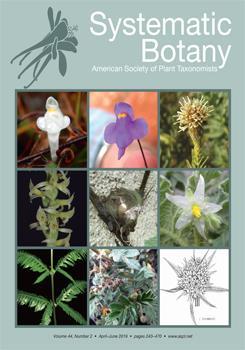Arjona is a small genus of hemiparasitic herbs distributed in southern South America. Most species are found in dry open areas in rocky and sandy soils whereas A. pusilla is found in humid places such as wet meadows. Regional treatments recognize five species and two varieties. The species are not clearly defined, and leaf shape and pubescence are the main differentiating taxonomic characters. In this study individuals from four of the five recognized species were examined to reconstruct the evolutionary history of the genus and to test the monophyly of recognized species. Samples covered the range of morphological variability and geographic distribution. The nuclear ribosomal internal transcribed spacer (ITS) regions and two chloroplast spacers (atpB-rbcL and trnL-F) were used to reconstruct the molecular phylogeny of the genus using Bayesian inference and maximum likelihood criteria. The molecular data show that geography better explains phylogenetic groupings than species assignment. This suggests that morphological variation among populations, in the context of the genetic lineages, should be studied in more detail to test the hypothesis that different ecotypes exist in Arjona.
How to translate text using browser tools
6 August 2019
Phylogenetic Relationships in Arjona (Schoepfiaceae), a Hemiparasitic Herb from Southern South America
Romina Vidal-Russell
ACCESS THE FULL ARTICLE

Systematic Botany
Vol. 44 • No. 3
August 2019
Vol. 44 • No. 3
August 2019
Andes
ecotypes
genetic divergence
Parasitic plants




